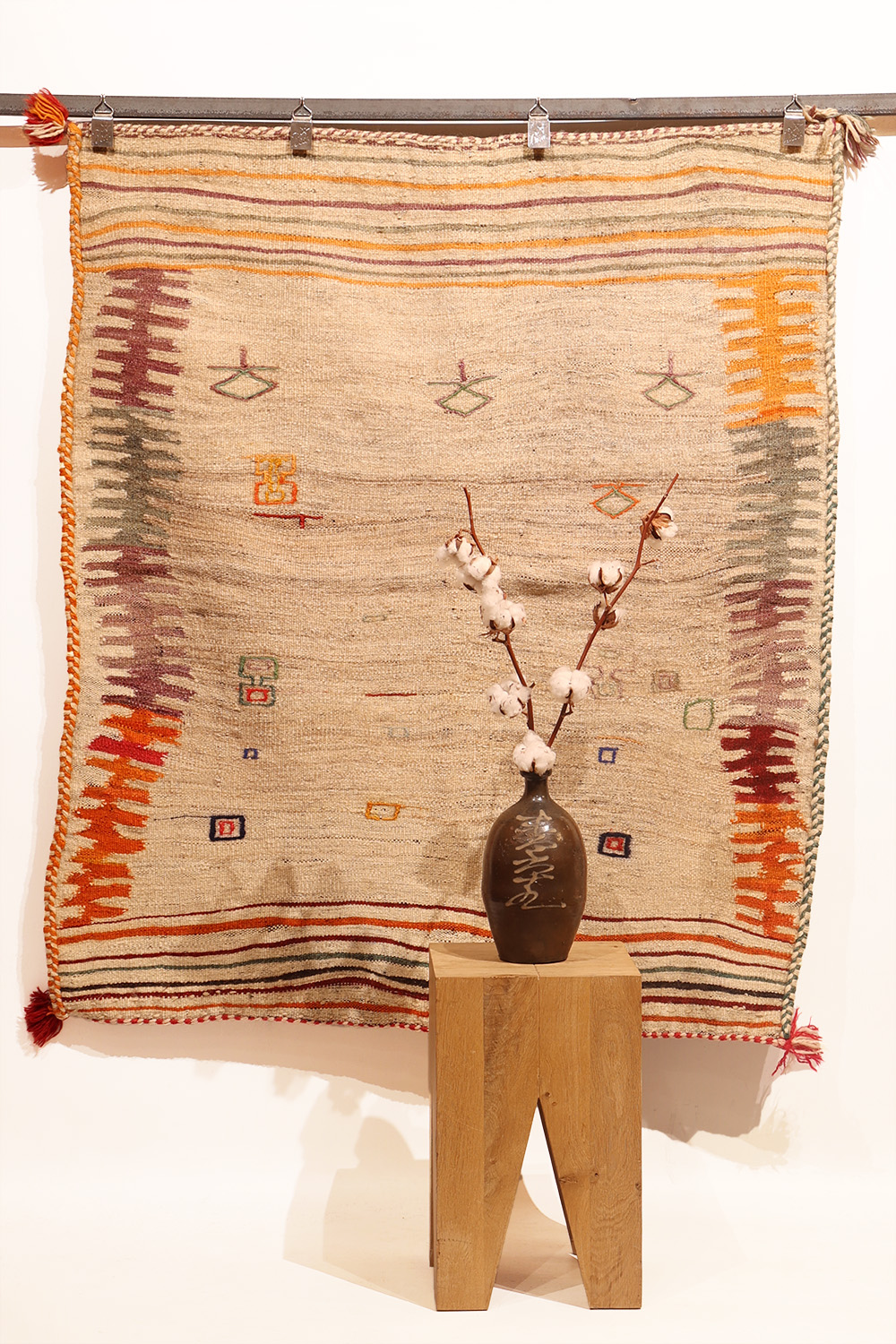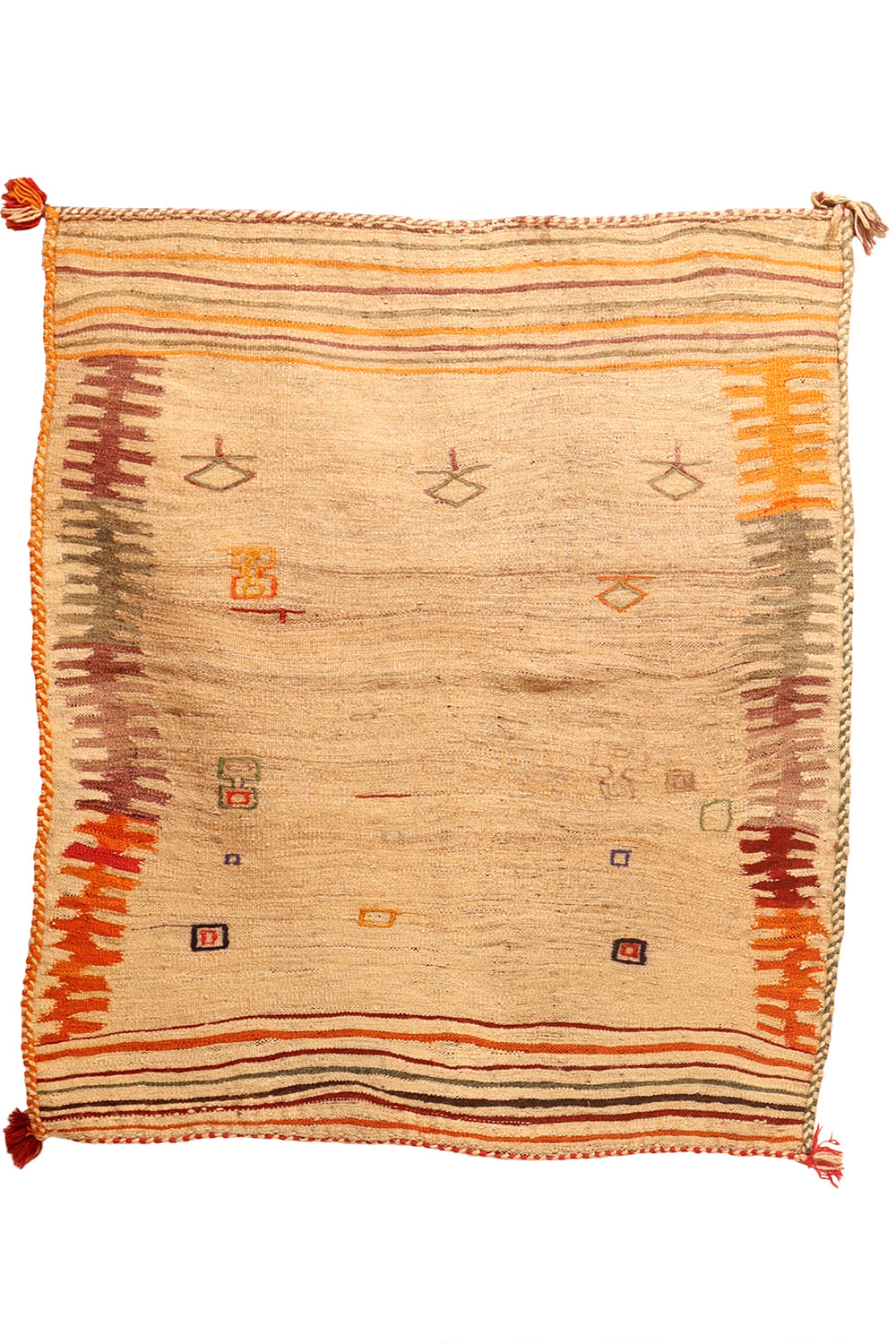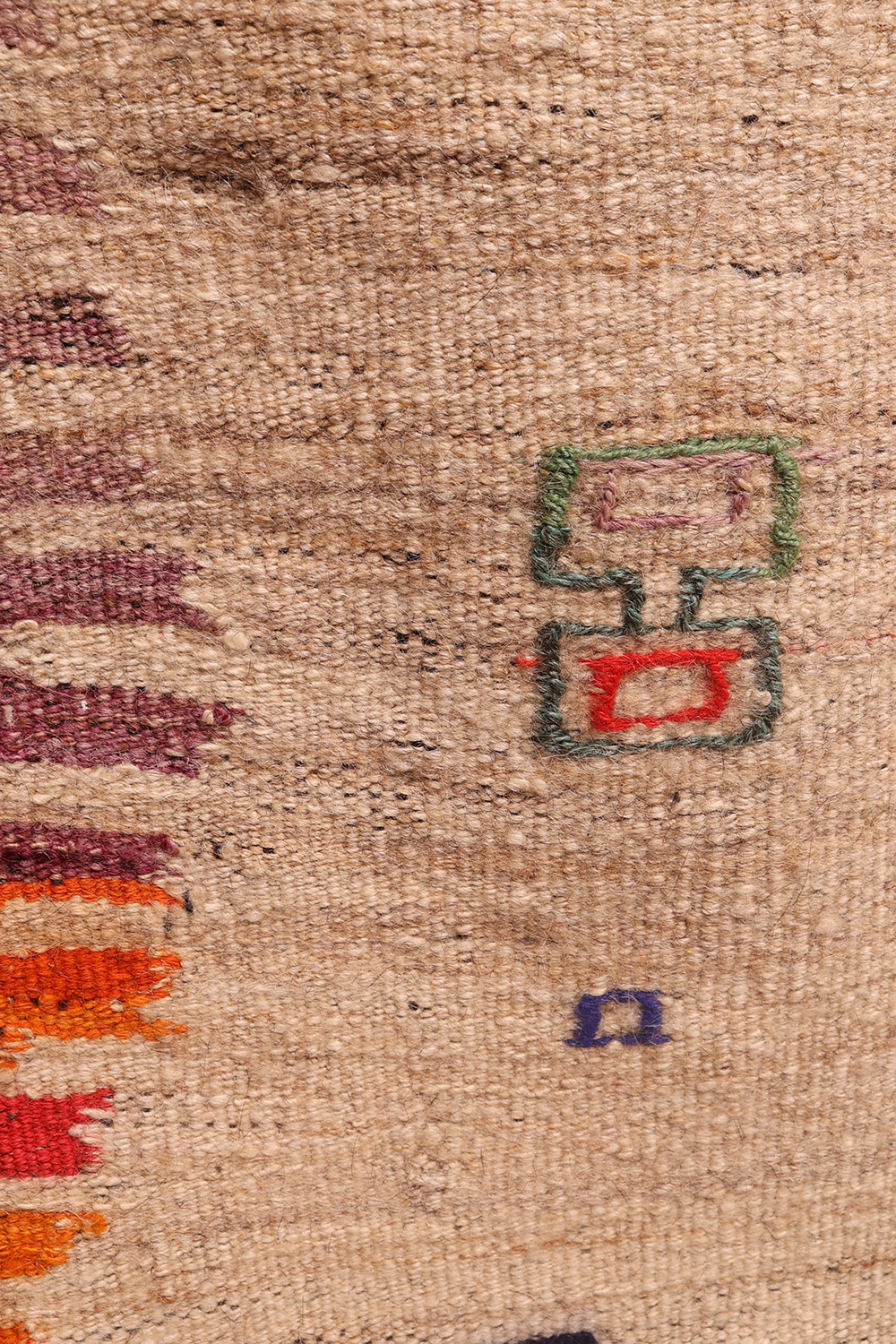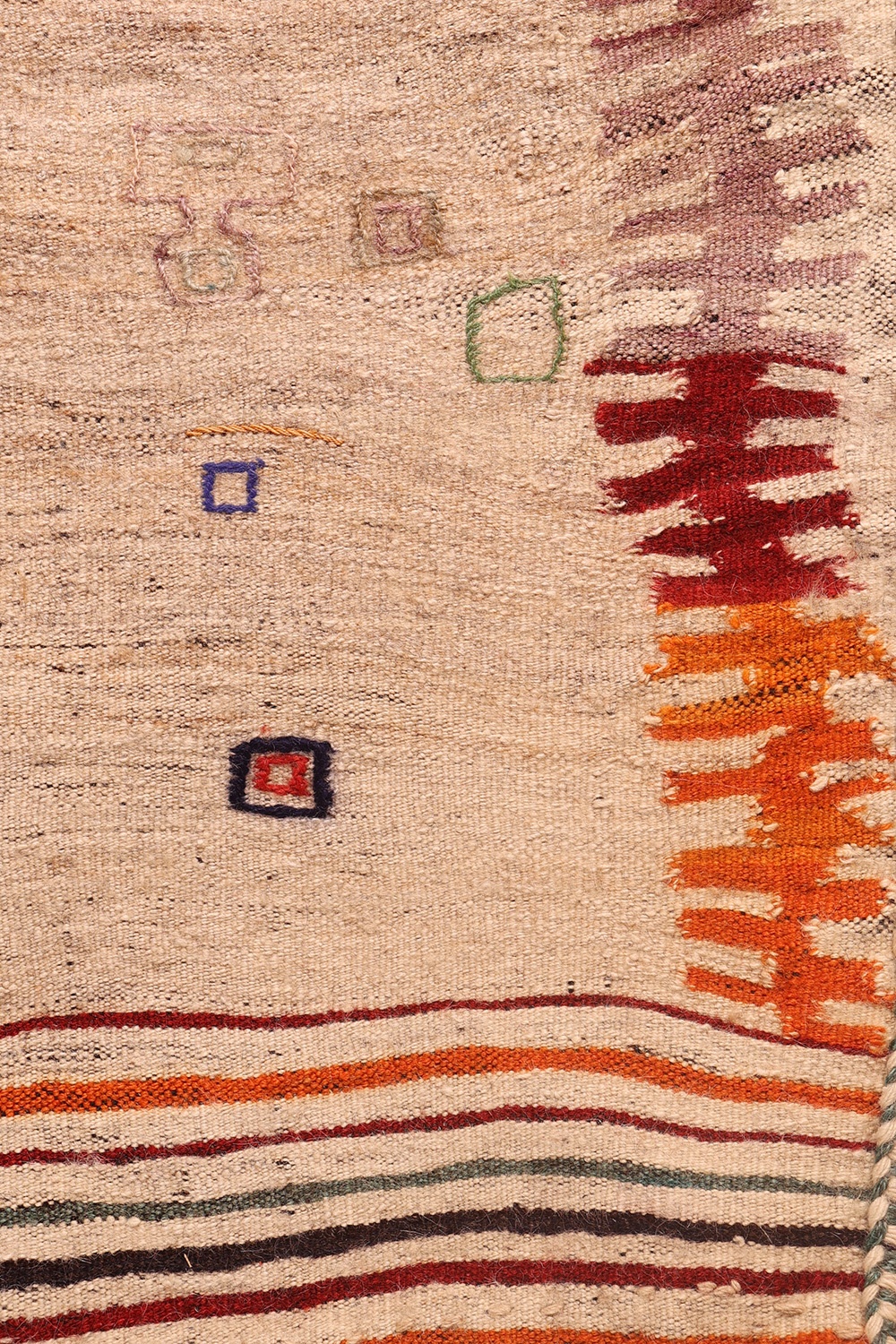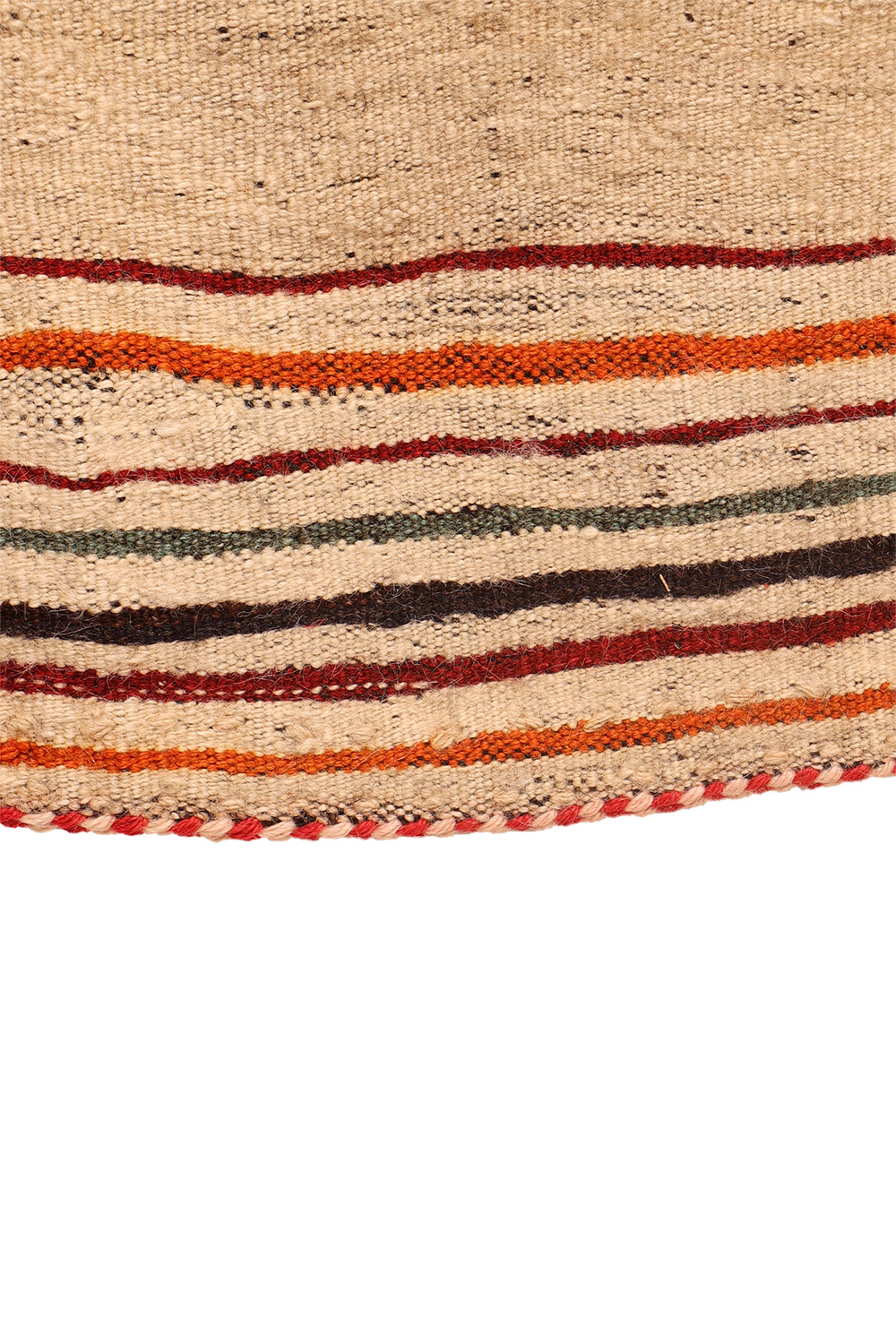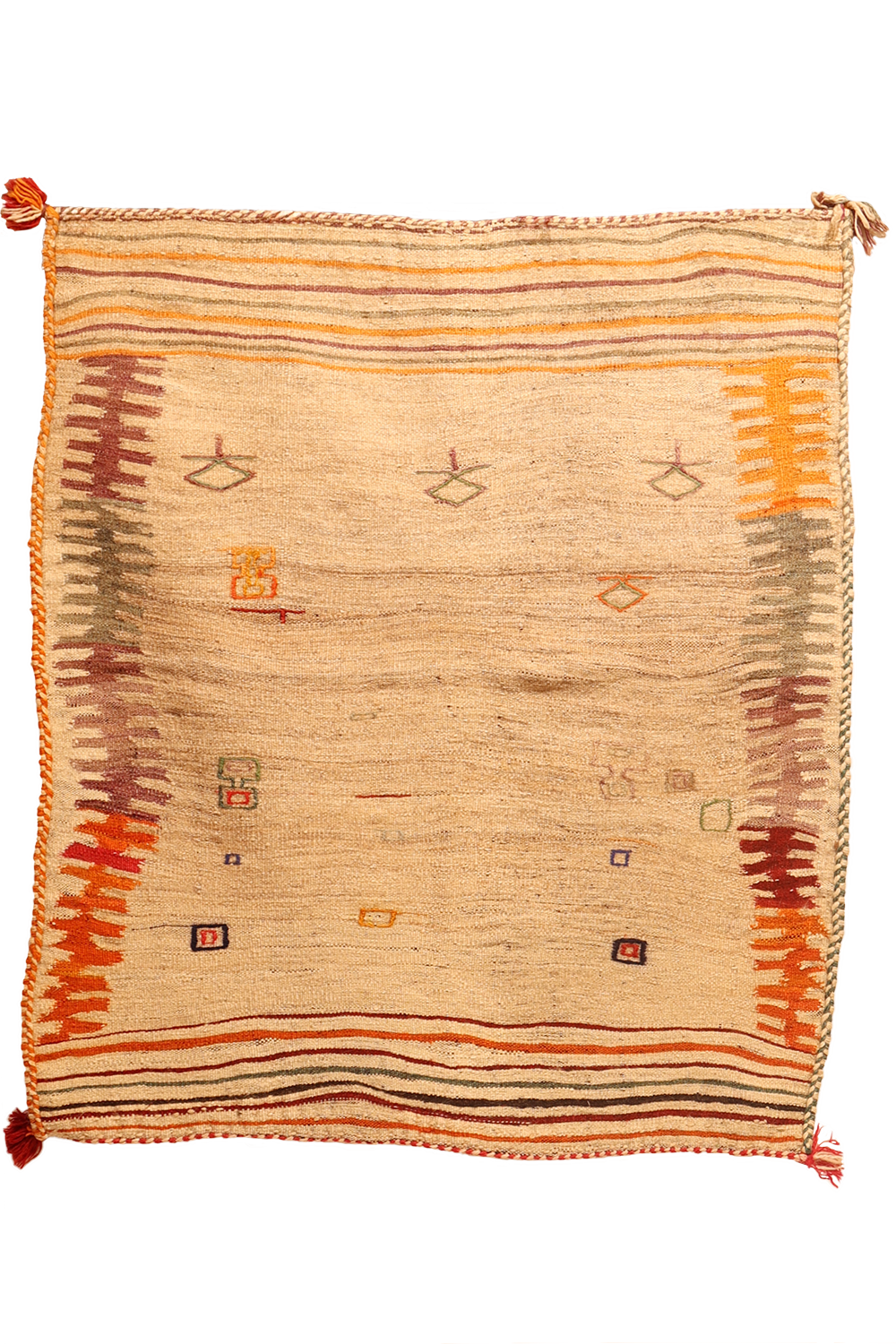350.00 €
An exceptional vintage Luri sofreh, or bread-making kilim, featuring a unique array of motifs. The main field is woven with undyed natural wool, giving it an earthy, organic background. The “comb” motif along the border has been so creatively woven that it almost resembles a spine, adding a distinctive character. Scattered across the field are whimsical, freeform designs that look like tiny creatures from outer space. This kilim is sure to be a conversation starter and a memorable piece for any guest!
Material: 100% hand-spun sheep wool
Size: 135×117 cms
Origin: Luri tribe, Iran
Date of weaving: 1970s
Lurs (or Lors) are an Iranian people living mainly in western and southwestern Iran. There is also a significant population of Lurs in eastern and central parts of Iraq The word Luristan or Lorestan, is attributed to the areas inhabited by the Lurs. The boundaries of Luristan stretch from the eastern Iraqi plains to the west and southwest of Iran. Today, Lorestan is the name of one of the western provinces of Iran. Luristan´s rugged terrain, which still bars easy access from Iraq, favored integrity of style. The Luri wool tends to be soft and shinny.
Sofrehs take their name from the Farsi (Persian) word for cloth and are used for several functions connected with preparing and eating food. Eating cloths are normally referred to simply as sofrehs and vary enormously in size-from small, rectangular mats for personal use to extremelly long, narrow runners for communal eating. They are woven in several standard techniques, including alternating bands of kilim and pile rug, and produced by a number of nomadic and tribal weavers in Iran, Afghanistan, Central Asia and to a lesser degree, elsewhere.
1 in stock
Additional information
| Weight | 3.9 kg |
|---|
Subscribe and receive the lastest news
